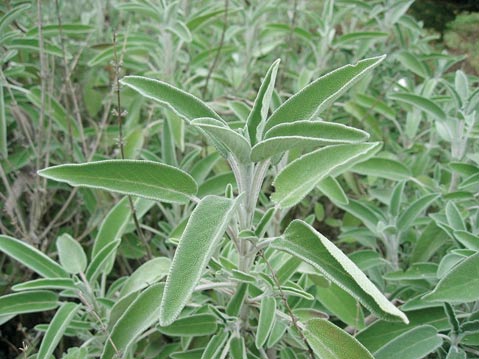Sage Plantings
The Myriad Stars of This Diverse Genus

Some species in the very diverse genus Salvia (around 900 species total) are merely kitchen herbs, but this group of plants has many other stars. There are sages that have been used for myriad health treatments. In Spain and other parts of Europe, the oil of S. lavandulifolia is used to retard Alzheimer’s; in the Middle East (Syria to Sicily, actually) the leaves are taken to treat heart disease, as well as used to flavor cheese (nice pairing!); in Cyprus, they use the same species, along with S. cypria and S. triloba, to clean their teeth. The aromatic oil of S. sclarea is used to scent soaps and other beauty products in Europe and central Asia, and there is even a sage, S. divinorum, that is hallucinogenic and has been used in religious ceremonies, as well as recreationally.
For gardeners, though, there are dozens more that are highly ornamental. Many have flowers in shades of blue or lavender, and most form mounding shrubs up to several feet in diameter and height. The commonly seen Salvia leucantha, or Mexican sage, comes in several forms, but a few others are just as handsome. Check out S. ‘Allen Chickering’ or S. ‘Bee’s Bliss’ and S. ‘Anthony Parker.’ More species on this side of the spectrum are S. cedrosensis, S. chamaedryoides, and S. coahuilensis, to name just a few.
Blue is not the only hue, and many are the sages that have fiery-red or flashy-pink flowers. Salvia chiapensis blooms nearly year-round with fuchsia-pink flowers, S. confertiflora flowers are fire-engine red, pineapple sage (S. elegans) blooms in brilliant red, and S. darcyi also tops its bright-green foliage with spikes of scarlet. There are S. greggii selections and hybrids that range from salmon-colored to magenta and pale pink.
The individual flowers of sage plants are tubular and are arranged either in whorls or more densely packed along a stalk. Each flower is surrounded by a calyx bract. In some cases, that calyx is also highly colored and may be in stark contrast to the flower color. Salvia mexicana ‘Limelight’ has intensely blue flowers surrounded by chartreuse-green bracts. The calyx of S. lanceolata flowers is a dusky maroon, but the flowers are a yellowish rose (hard to explain, but eye-catching!). And the midnight-blue (nearly black) flowers of S. discolor are surrounded by chalky-gray bracts.
There are a couple of notable species of sages that have white flowers. Not only are the flowers white on Salvia apiana, but the foliage is also dusted with white. When S. argentea finally blooms in its second year (it is a biennial), its clusters of flowers are also white. Another pastel sage is S. x jamensis ‘Sierra de San Antonio,’ with pale peachy-colored flowers.
This listing is really just the tip of the iceberg of sage selections. With so many to grow and collect, it is no wonder there is much written about them. For lots more information, visit the San Marcos Growers website (smgrowers.com) and that of Las Pilitas Nursery (laspilitas.com). One of the best books on the subject is The New Book of Salvias, Sages for Every Garden by Betsy Clebsch. Gardeners Guide to Growing Salvias by John Sutton gives an in-depth look at the plants and their relationships, as well as gardening information. So there is no excuse for not having a salvia or two in every garden.



